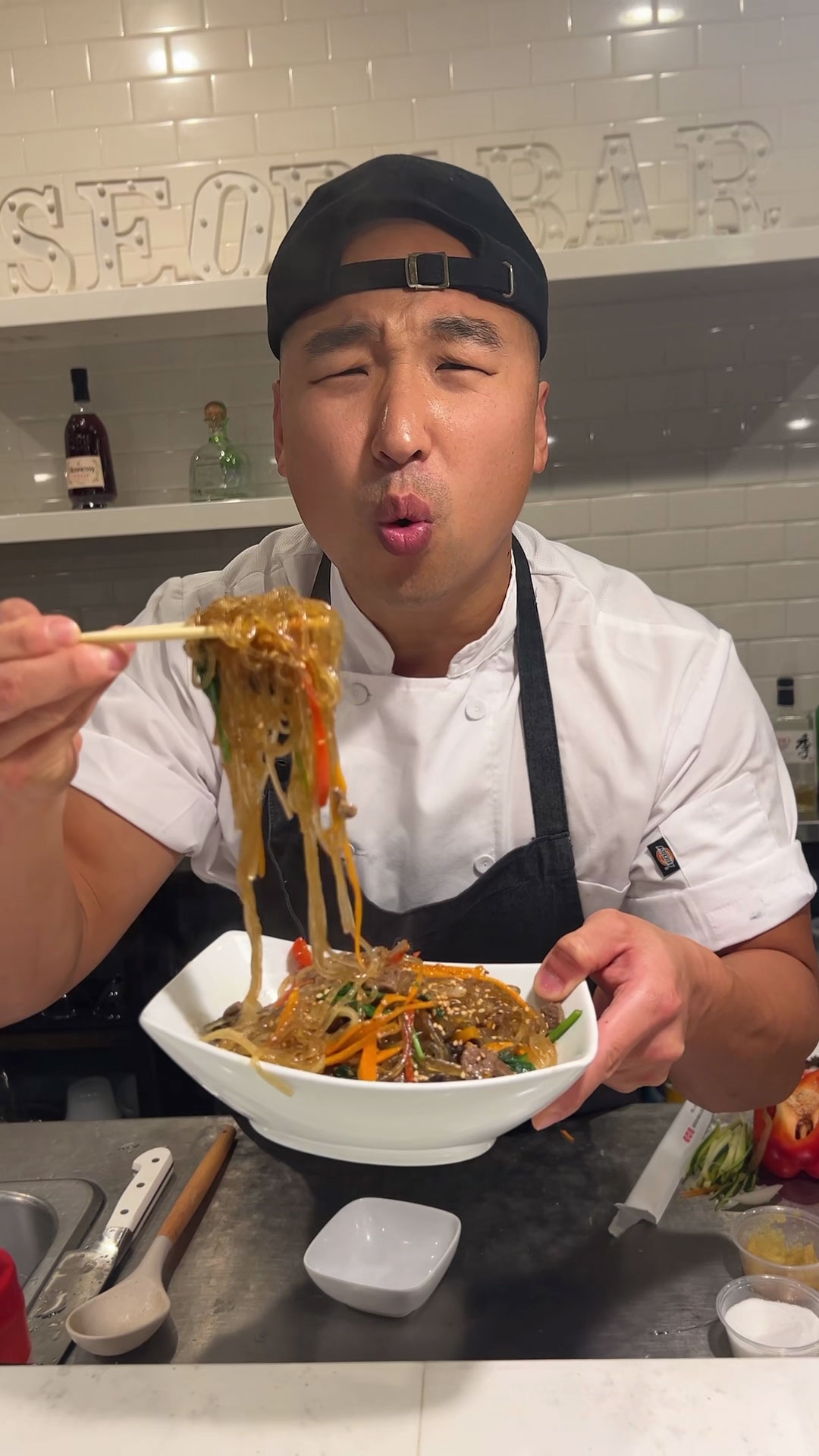
Japchae is a beloved Korean dish that features chewy glass noodles, vibrant vegetables, and a harmonious blend of sweet and savory flavors. Many people often enjoy this during Korean festivities and at Korean BBQs!
Can you believe Koreans initially made Japchae with only vegetables? Japchae literally means “mixed vegetables”! They later added chewy glass noodles to soak up the sweet, umami-rich sauce, binding all the flavors together. Furthermore, this dish isn’t just good for its taste but also for the beautiful color combination of the vegetables.
Koreans often serve Japchae during their Thanksgiving. They believe that noodles represent longevity while vegetables represent the abundance of harvest. The lengthy traditional preparation allows families to beautifully work together for a dish that everyone of all ages can enjoy!
Japchae Ingredients and Preparation
Disclaimer: I get a small commission at no additional cost to you when you make a qualified purchase under the affiliate links.
Korean Glass Noodles
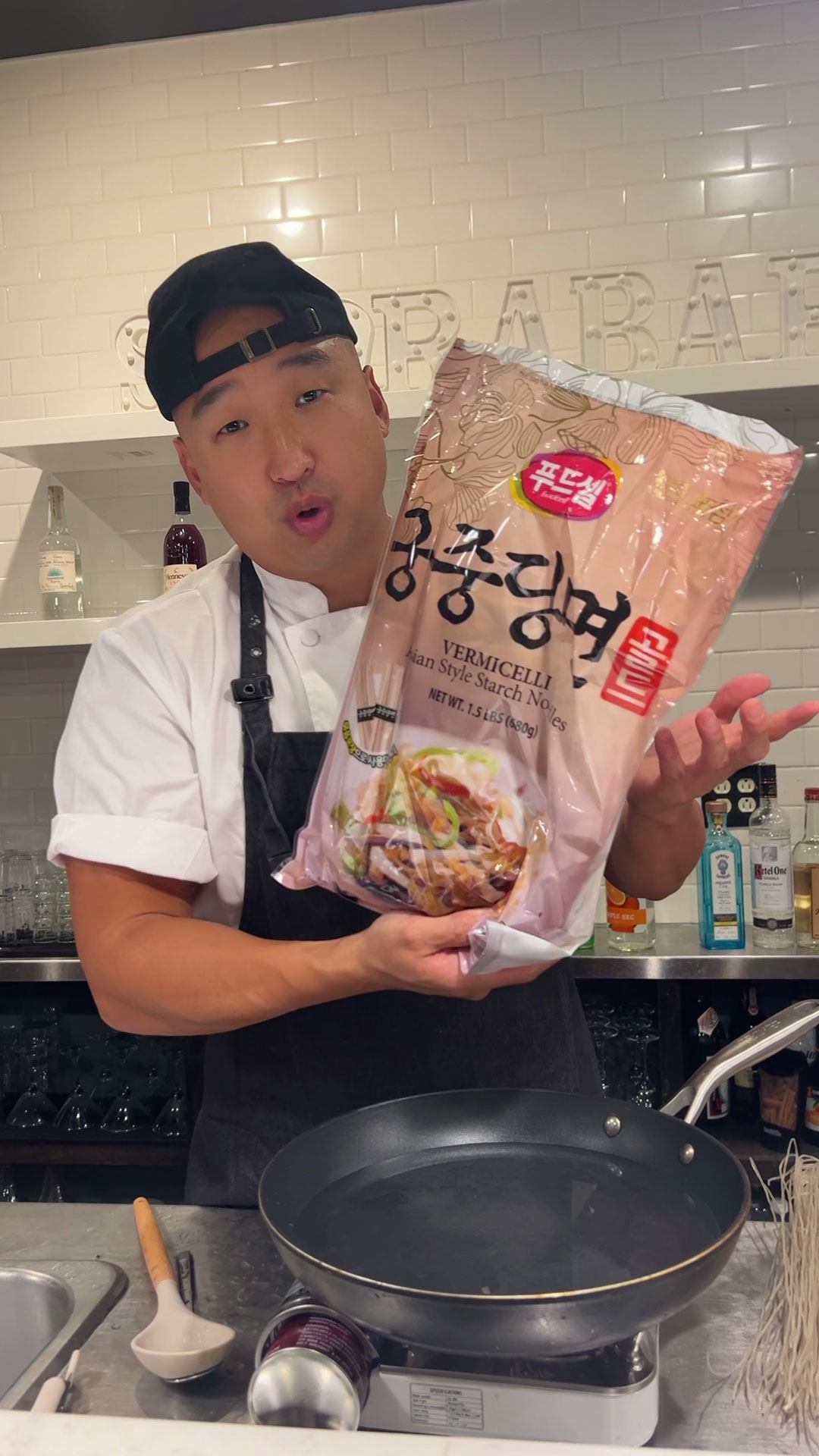
The noodles used in Japchae are Korean glass noodles or dangmyeon. This is also sometimes labeled as Korean vermicelli noodles or sweet potato noodles. The strands are grey and thick, transparent when boiled, and absorb the amber color when mixed with the sauce.
These are usually available at Hmart. When buying, you have to check the appearance because there’s also a thin variant of the noodles which is different.
To prepare, follow package instructions to cook—usually, it’s between 10-12 minutes. But I also have a simple hack to make this a one-pan noodle dish!
Remember: Do not overcook the noodles, otherwise, they will become “buraso” or mushy. In the same way, do not let the noodles just sit for more than 3 minutes after boiling because the residual heat will also overcook them. You need to stir fry it or combine it with the other ingredients right away.
Toppings
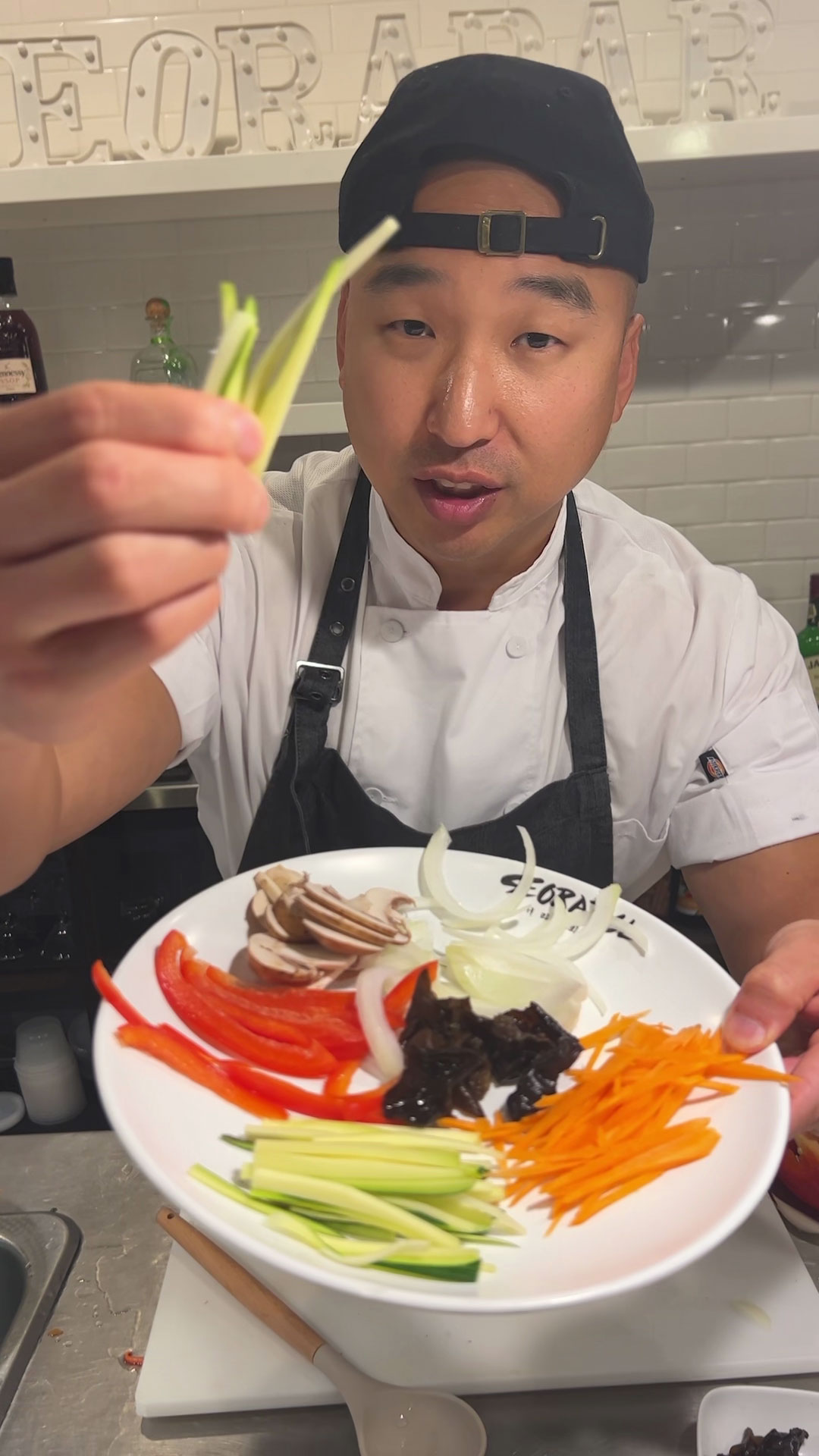
- Garlic – Minced
- Onion – Sliced into strips
- Red Bell Pepper – Julienned
- Shiitake Mushrooms – Thinly sliced
- Wood Ear Mushrooms – Soaked in hot water for 30 minutes to hydrate
- Carrots – Julienned
- Spinach – Clean
- Beef – Any cut of beef is okay as long as you slice it into thin strips. Nevertheless, you can skip this altogether and make the japchae vegetarian.
The toppings are not limited to what I shared above. Feel free to use other vegetables like green onion, varieties of mushrooms, cabbage, zucchini, egg, etc. You can use whichever you prefer among these, simply chop them thinly or julienne so they are easy to pick up when you eat them.
Japchae Sauce
- Soy Sauce – For the savory flavor
- Sesame Oil and Sesame Seeds – For the earthy and nutty complement to the soy sauce
- Sugar – For sweetness that will balance the saltiness
- Oyster Sauce – My secret ingredient! Add a small amount for that hit of umami. Skip this if you’re allergic, but I highly recommend adding this!
- Salt and Pepper – To taste
How to Make One Pan Japchae?
My goal is to make this recipe in one pan and the key to accomplish that is to prepare your ingredients in advance and be familiar with the steps so that you can easily multitask. We want to prevent overcooking of the ingredients so they are in their optimal texture and flavor. I’m proud of this recipe because it’s quick and easy, but I assure you this is restaurant quality!
1. Prepare the ingredients. Hydrate mushrooms, blanch and drain the spinach, chop other vegetables julienne, and thinly slice the beef and season them with salt and pepper. Prepare the seasonings as well.

2. Boil the noodles. Boil water then cook the noodles for 6 minutes. We will finish cooking it later with the rest of the ingredients. By shortening the boiling time, this prevents the noodles from overcooking. Now drain and wash the noodles with cold water to remove excess starch and stop the residual cooking from the remaining steam/heat. Set it aside.
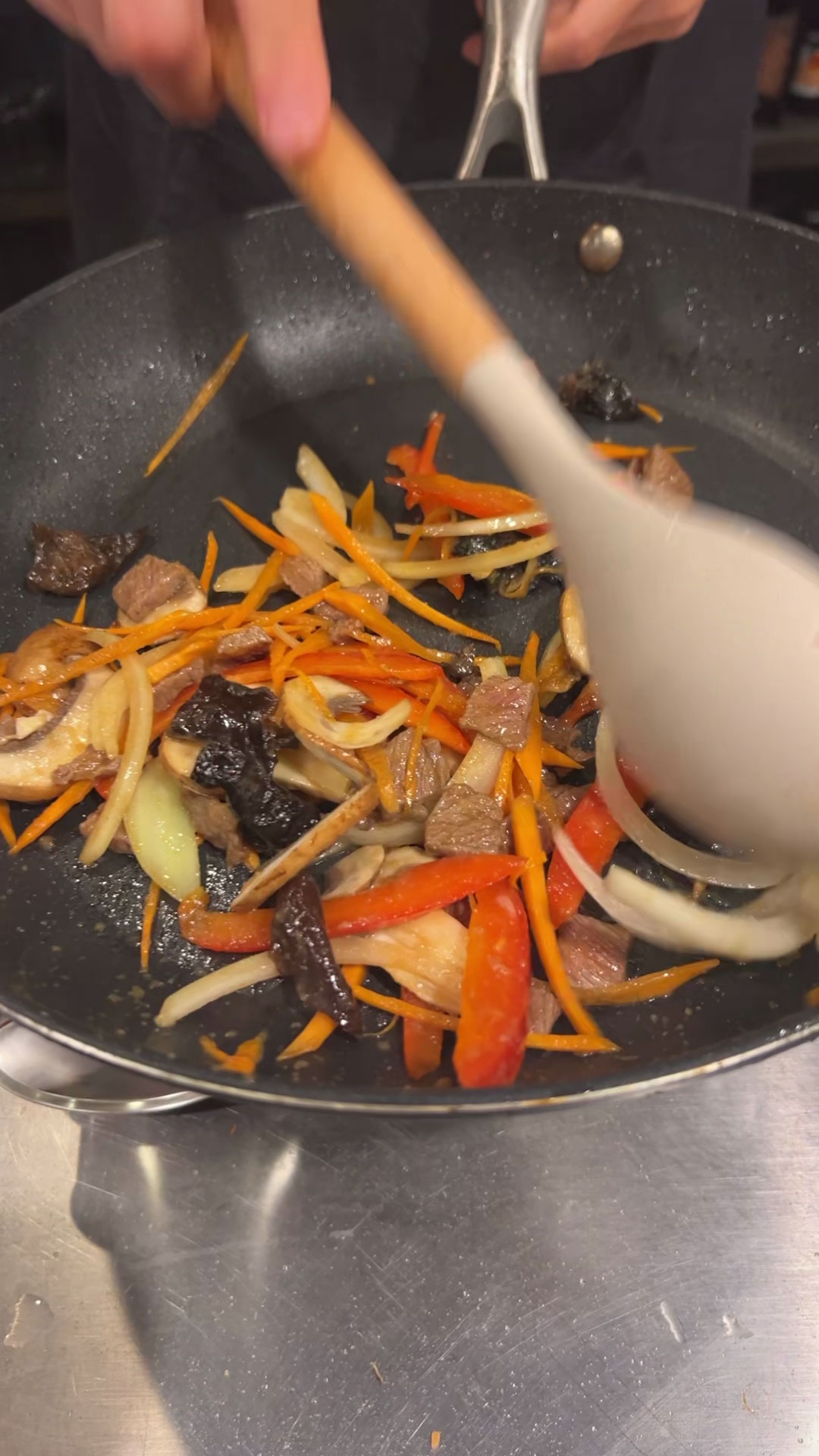
3. Saute the beef and vegetables. Place your pan on medium-high heat, add a bit of oil, and saute the beef until 70% cooked. Add the carrots, onion, and mushrooms first because they take longer to cook then continue sauteing. After a couple of minutes, add the spinach and peppers, and season the vegetables with salt, pepper, and garlic. Continue to saute for a couple of minutes, but the key here is to just quickly cook them so they retain their crunch.
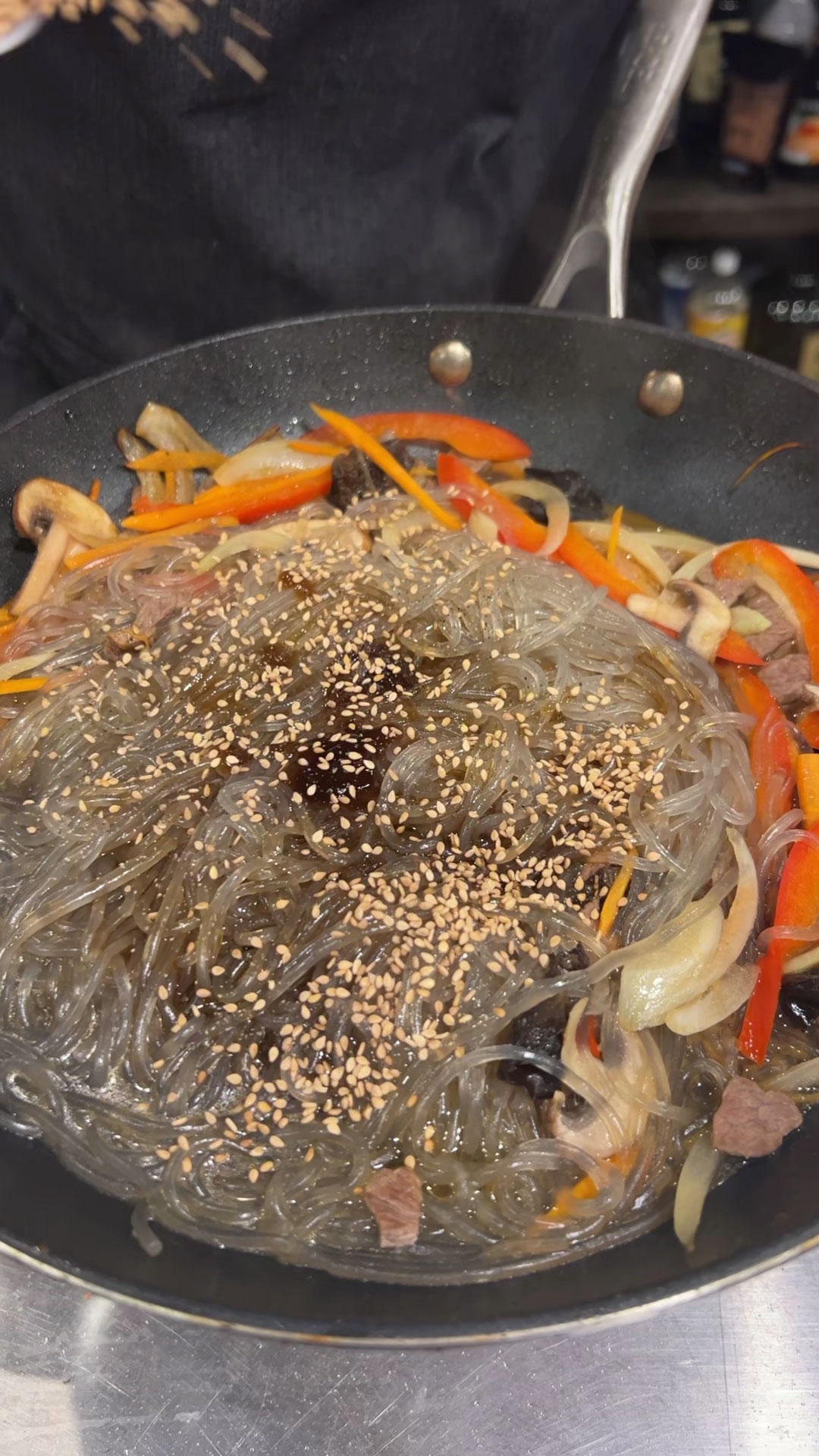
4. Add and season the noodles and vegetables. Add the noodles to the pan with half a cup of water and season it with soy sauce, sesame oil, oyster sauce, sugar, and sesame seeds. Put these on top of the noodles so they hydrate them. You’ll notice that it’s easier to mix since there’s a lot of water, but this will be absorbed and the japchae will finish beautifully.
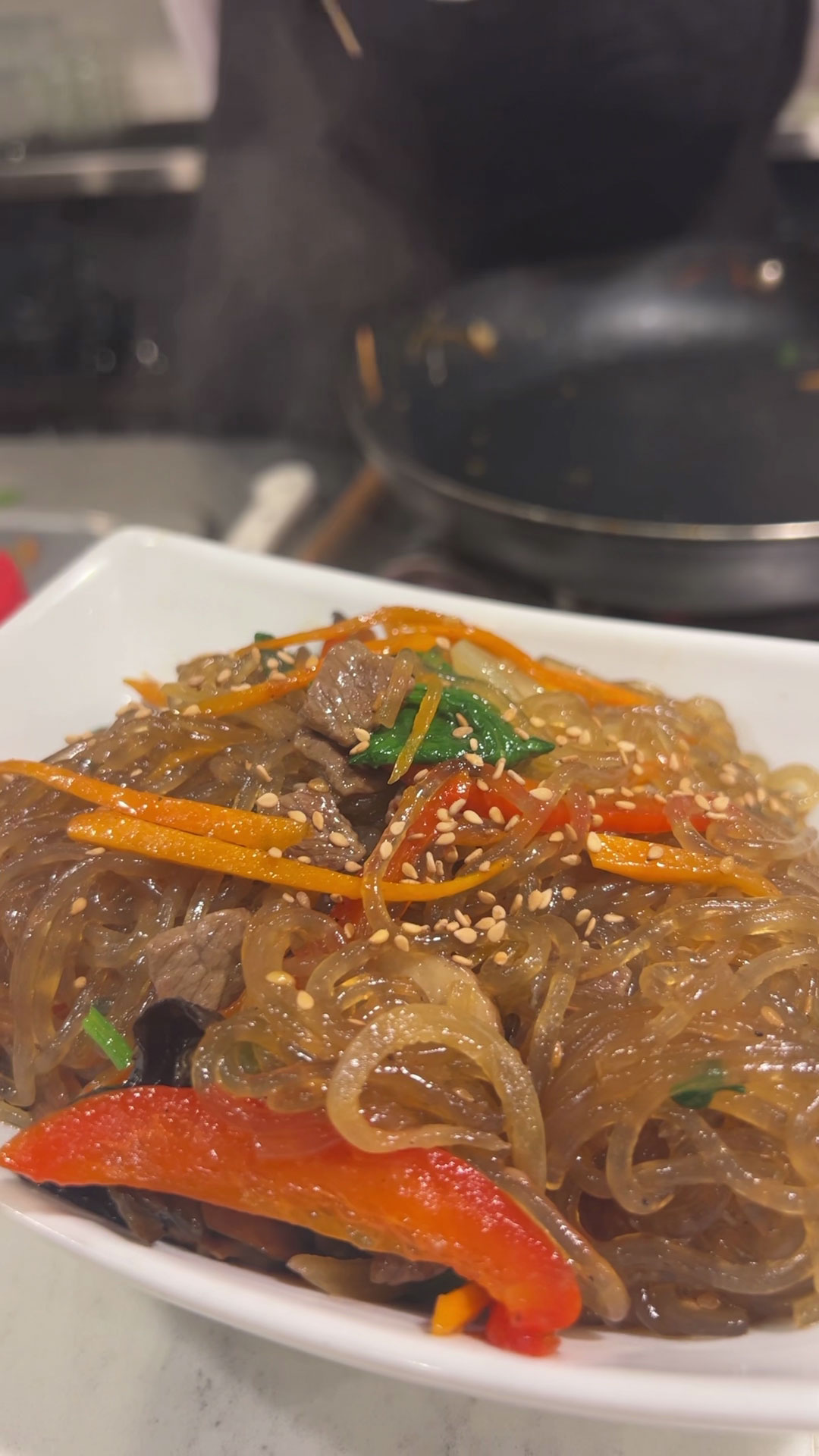
5. Mix the noodles thoroughly, taste, and adjust. Keep mixing the noodles until all the ingredients are well seasoned and the sauce is fully absorbed by the noodles. As always, taste as you go. If you think it needs a bit more seasoning, then add salt. If you want it to be a little sweeter, then add more sugar.
6. Plate, serve, and enjoy! In plating place the noodles at the bottom and top it with the colorful vegetables. Garnish with sesame seeds and serve!
Traditional Way of Making Japchae

Japchae is traditionally prepared similarly to bibimbap. Ahjummas usually saute the vegetables separately to control the texture of the vegetables, cook the noodles as usual, and then combine the sauce ingredients.
Once all ingredients are ready, they’ll combine everything in a large bowl and mix by hand for that “sohn mat” or “hand taste” to ensure even distribution and thorough coating of the sauce. This method really makes a deeply flavorful japchae!
Japchae is usually done in big batches. As you can see, the different parts of the preparation make this a perfect dish to bring families together!
How do you serve Japchae?

To serve, this is usually served as a side dish along with a Korean feast. Typically, special occasions for us would comprise of these noodles, variants of meat like Galbi Jjim (Braised Short Ribs) and Dwaeji Galbi (Braised Pork Ribs), variants of mini pancakes like Wanja Jeon Beef Patties) or Buchu Jeon (Chives Pancake), different kinds of kimchi like Cabbage Kimchi and Water Kimchi, and soup like Mandu Guk and Mu Guk.
This is also frequently enjoyed as a side dish to Korean BBQ. Through this, it has captured the hearts of many, because of its delightful taste and ability to complement the grilled meats.
If you have leftovers, store japchae in an air-tight container and in the fridge for 1-2 days. However, this must also be consumed immediately as its texture can change. Serve cold or microwave for a couple of minutes and enjoy!
Other Korean noodle dishes you might like:
Make sure to leave a rating, a comment, or tag me on Facebook, Instagram, or Tiktok when you chop them up! Yeobosayo!
Korean Glass Noodles Stir Fry (Japchae)
Ingredients
- 150 grams Uncooked Korean Glass Noodles or Sweet Potato Noodles or Dangmyeon
Japchae Ingredients
- 20 grams Shiitake Mushroom Sliced thinly
- 20 grams Woodear Mushroom Sliced in half
- 30 grams Red Bell Pepper Julienne
- 50 grams Onion Sliced thinly
- 15 grams Carrots Julienne
- 30 grams Spinach Cleaned
- 1/2 tbsp Garlic
- 70 grams Any Beef Cut Sliced thinly, seasoned with 1 tbsp soy sauce
- Vegetable or Canola Oil For sauteing
Japchae Sauce
- 1/2 cup Water
- 3 tbsp Soy Sauce
- 1 tbsp Sugar
- 2 tbsp Sesame Oil
- 1/2 tbsp Oyster Sauce
- Salt and Pepper To taste
- Sesame Seeds For garnish
Instructions
- Prepare the vegetables. Set aside.
- Slice the beef and season with 1 tablespoon soy sauce. Set aside.
- Combine soy sauce, sesame oil, oyster sauce, sesame seeds, and sugar. Set aside.
- In a pot, boil water. Once it’s boiling, add the noodles for 6 minutes.
- Drain the noodles, wash them with cold water, then leave to drain again.
- In the same pan, place it on high heat. With a bit of oil, stir-fry the garlic and beef.
- When the beef is 70% done, add the vegetables. Add the onions, carrots, and mushroom first and cook for a minute, then add the rest of the vegetables and saute for a couple of minutes. Season it with salt and pepper and do not overcook it!
- Add the noodles, half cup of water, and the sauce and mix thoroughly for 4 minutes.
- Once everything is cooked and the sauce is absorbed by the noodles, move japchae to a plate and garnish with sesame seeds.
- Serve and enjoy!
Notes
- Other vegetable options can include zucchini and cabbage, just make sure that the total weight of the veggies is 150-200 grams.
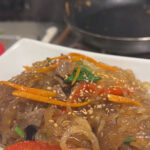
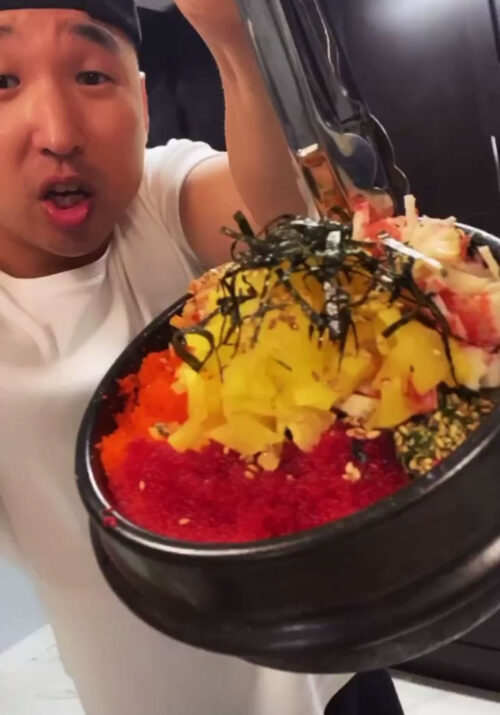
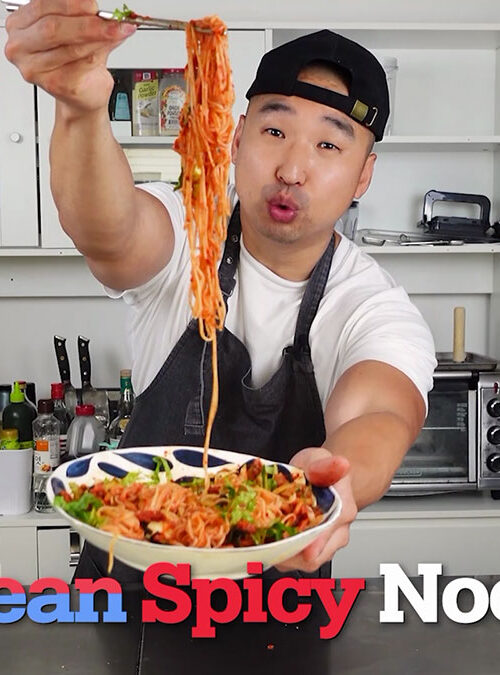
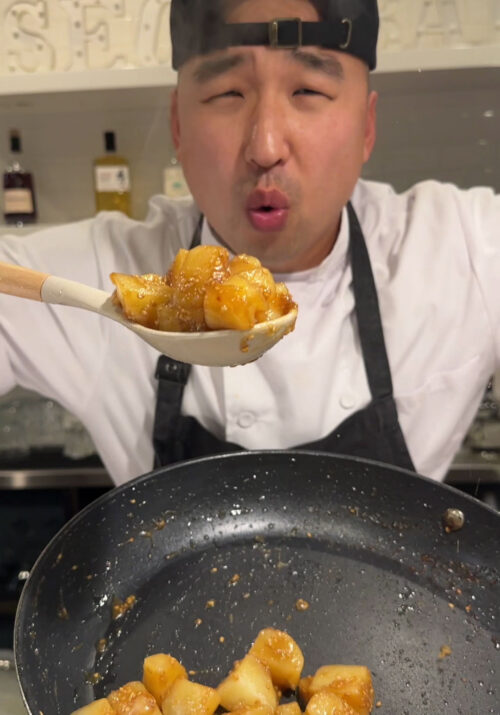


Yoo Chef Cho, there’s garlic instead of sugar in your sauce recipe. Just letting you know, thanks for the great recipes!
Good eye! Edited it already, thank you so much for pointing it out!
Perfect Japchae!
Yeobosayo!!